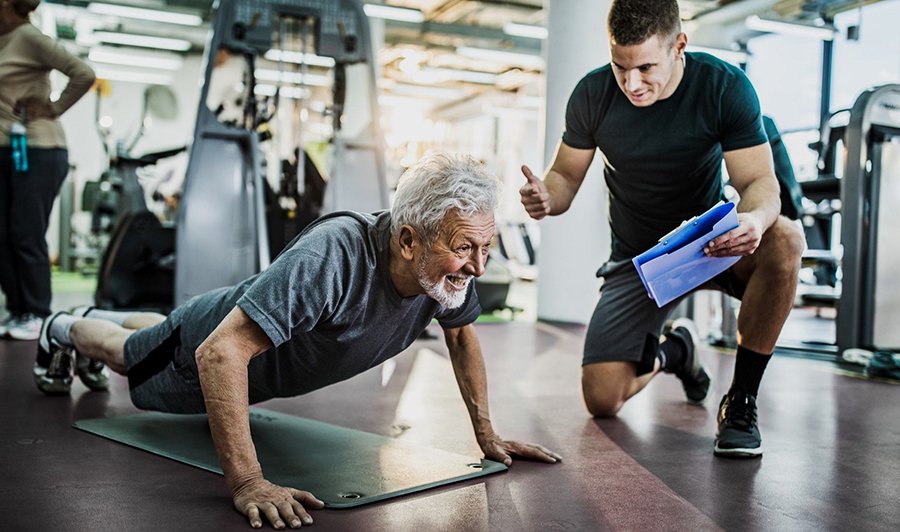If you’re a senior or elderly individual looking to improve your fitness and strength, finding a certified fitness trainer who specializes in working with older adults is key. But what qualifications and certifications should you look for in a senior fitness instructor? And how can you find someone who specializes in strength training for older adults? Once you’ve found a trainer, what techniques and modifications should they incorporate into their strength training program? And how can they ensure your safety and well-being during sessions? These are just a few questions we’ll explore in this article, along with recommendations for reputable fitness organizations and programs, exercises and equipment that benefit seniors, and modifications for those with physical limitations or health conditions. Get ready to embark on a journey to a stronger, healthier you!
Qualifications and Certifications for Senior Fitness Instructors
As a senior fitness instructor, it is important to have the necessary qualifications and certifications in order to effectively lead strength training sessions for older adults. These qualifications and certifications not only demonstrate your expertise and knowledge but also ensure the safety and well-being of your clients.
The International Sports Sciences Association (ISSA) offers a Certified Fitness Trainer certification that is specifically designed for working with older adults. This certification covers topics such as anatomy and physiology, nutrition, exercise techniques, and special considerations for older adults. Additionally, the National Academy of Sports Medicine (NASM) offers a Senior Fitness Specialist certification which focuses on the unique needs and limitations of older adults.
Other certifications that are recommended for senior fitness instructors include the National Council on Aging’s (NCOA) Center for Healthy Aging Exercise Coach certification and the American Council on Exercise’s (ACE) Senior Fitness Specialist certification. These certifications provide a comprehensive understanding of aging and exercise physiology, as well as practical skills for working with older adults.
By obtaining these qualifications and certifications, you will be equipped with the necessary knowledge and skills to design and implement safe and effective strength training programs for older adults.
Finding Senior Fitness Instructors
If you are looking for a senior fitness instructor who specializes in strength training for older adults, there are several methods you can utilize to find the right fit for your needs.
One option is to utilize online directories and databases that specifically list fitness professionals who specialize in working with seniors. Websites such as IDEA Health & Fitness Association and the National Exercise Trainers Association (NETA) have search functions that allow you to find instructors in your area who have experience with older adults.
Another method is to seek referrals from healthcare professionals such as doctors, physical therapists, or chiropractors. These professionals often have networks of trusted fitness instructors who they can recommend based on their experience and reputation.
Lastly, contacting fitness organizations such as the American Senior Fitness Association or the American College of Sports Medicine can also be a valuable resource. These organizations can provide you with a list of certified and experienced senior fitness instructors in your area.
It is important to take the time to research and interview potential senior fitness instructors to ensure they have the qualifications and experience necessary to meet your specific needs and goals.
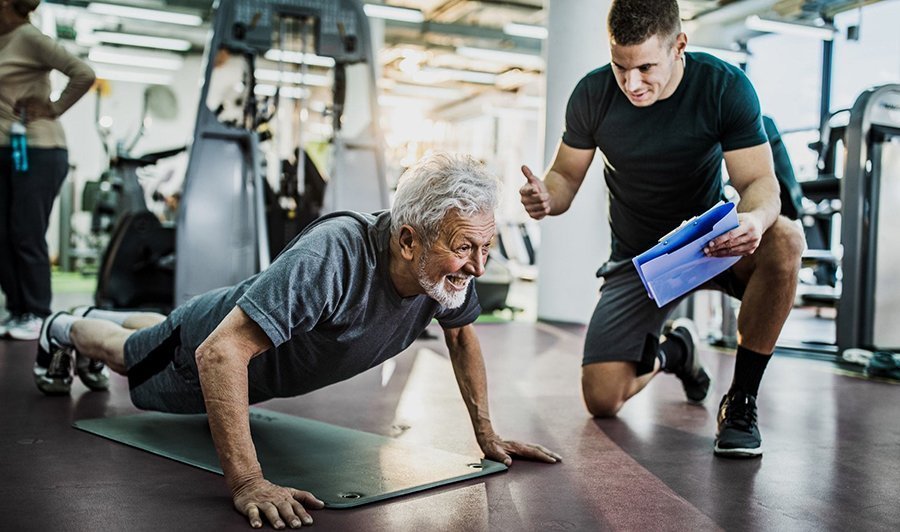
Techniques and Modifications in Strength Training
When working with older adults, it is crucial to incorporate specific techniques and modifications into their strength training program to ensure their safety and maximize the benefits they can receive.
One important technique to focus on is proper form and technique. Older adults may have limitations in mobility and flexibility, so teaching them how to perform exercises with correct form is essential. This not only reduces the risk of injury but also ensures that they are targeting the intended muscle groups effectively.
Modifications for joint health and flexibility should also be considered. For example, if an older adult has arthritis or joint pain, exercises that put less stress on the joints should be prioritized. This may include avoiding high-impact exercises and focusing on low-impact alternatives such as swimming or cycling.
Incorporating balance and coordination exercises is another important aspect of strength training for older adults. Balance tends to decline with age, so including exercises that challenge and improve balance can help prevent falls and improve overall stability.
By incorporating these techniques and modifications, senior fitness instructors can ensure that their clients are receiving safe and effective strength training sessions tailored to their individual needs.
Reputable Fitness Organizations and Programs
When seeking a senior fitness instructor who specializes in strength training for older adults, it is important to consider their certifications and affiliations with reputable fitness organizations.
Some organizations offer certifications specifically geared towards senior fitness, such as the National Senior Health & Fitness Day organization and the National Council on Aging. These certifications ensure that instructors have received proper training and education in working with older adults.
In addition to certifications, there are also programs that are specialized in strength training for older adults. The Strong Seniors program, for example, focuses on providing strength training exercises specifically designed for seniors to improve overall strength, balance, and flexibility. The SilverSneakers program is another popular option that offers a variety of group exercise classes for older adults.
For those looking for reputable programs and organizations, online resources can be a valuable tool. Websites such as the American Senior Fitness Association and IDEA Health & Fitness Association provide directories and information about programs and certifications for senior fitness instructors.
By choosing a fitness instructor who is affiliated with reputable organizations and programs, you can ensure that you are receiving quality instruction and guidance in your strength training journey as an older adult.
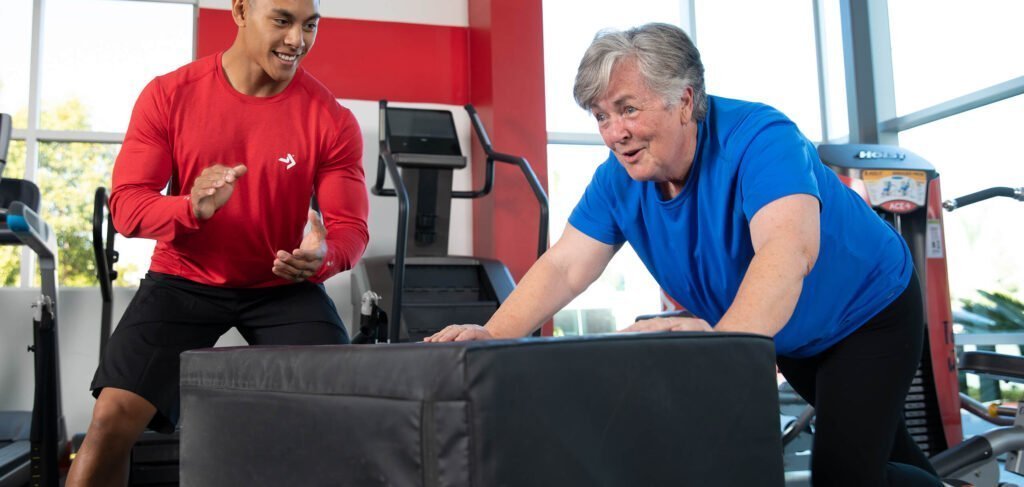
Importance of Experience with Older Adults
While qualifications and certifications are important, experience working with older adults is also crucial when choosing a senior fitness instructor for strength training sessions.
Experienced fitness instructors who have worked with older adults understand the unique needs and limitations of this population. They are aware of the physical changes that occur with age and can tailor exercises and programs accordingly.
Additionally, experienced instructors have knowledge and skills in dealing with age-related health conditions. They understand how certain health conditions, such as arthritis or osteoporosis, can impact exercise choices and modifications. This allows them to create safe and effective strength training programs that cater to individual needs.
Another advantage of working with experienced fitness instructors is their ability to adapt exercises for various fitness levels. Older adults have different fitness levels and capabilities, and an experienced instructor knows how to modify exercises to accommodate those differences. This ensures that each client can progress at their own pace and achieve their individual fitness goals.
When considering a senior fitness instructor, it is beneficial to inquire about their experience and ask for references or client testimonials. This will give you a better understanding of their expertise and the quality of their instruction.
Red Flags when Choosing a Senior Fitness Instructor
When choosing a senior fitness instructor for strength training sessions, there are some red flags or warning signs that you should be aware of to ensure you are making the right choice.
One red flag is a lack of qualifications and certifications. It is important to verify that the instructor has the necessary certifications and training to work with older adults. This ensures that they have the knowledge and expertise to design and implement safe and effective strength training programs.
Another red flag is the inability to provide references or client testimonials. A reputable fitness instructor should be able to provide references or testimonials from satisfied clients who can attest to their skills and professionalism.
Unwillingness to adapt programs for individual needs is another red flag to watch out for. Each individual has different needs and limitations, and a good fitness instructor should be willing and able to adapt their programs and exercises accordingly. If an instructor is rigid in their approach and unwilling to make modifications, it may be a sign that they are not well-suited for working with older adults.
By being aware of these red flags, you can avoid potential issues and ensure that you are choosing a qualified and experienced senior fitness instructor for your strength training sessions.
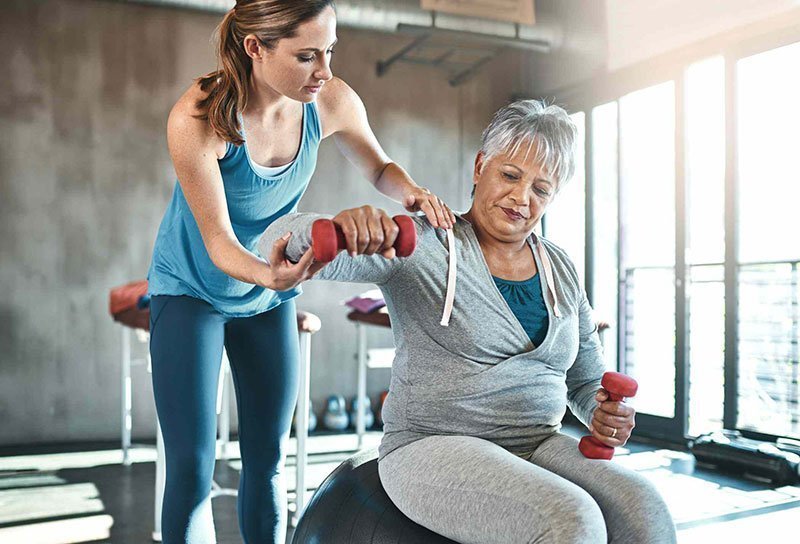
Additional Exercises in a Senior Fitness Program
In addition to strength training, there are other types of exercises and activities that a senior fitness instructor should incorporate into their program for a well-rounded fitness routine for older adults.
Cardiovascular exercises are important for heart health and should be included in a senior fitness program. These exercises can include walking, cycling, swimming, or participating in group exercise classes such as aerobics or dancing. Cardiovascular exercises help improve endurance, increase energy levels, and promote overall cardiovascular health.
Flexibility and stretching exercises are also important for older adults. As we age, our muscles and joints become less flexible, leading to a decrease in mobility and an increased risk of injury. Incorporating stretching exercises, such as yoga or Pilates, can improve flexibility, enhance range of motion, and promote better posture.
Functional exercises, which mimic movements and activities of daily life, are another key component of a senior fitness program. These exercises focus on improving strength, balance, and coordination for activities such as walking, climbing stairs, or reaching for objects. By incorporating functional exercises, older adults can maintain their independence and perform daily activities with ease.
By including these additional exercises in a senior fitness program, instructors can provide a well-rounded fitness routine that addresses cardiovascular health, flexibility, and functional strength for older adults.
Safety and Well-being during Strength Training
Ensuring the safety and well-being of older adult clients during strength training sessions is paramount for senior fitness instructors. Here are some important considerations to prioritize:
Proper warm-up and cooldown routines should be incorporated into each strength training session. Warm-ups prepare the body for exercise by increasing blood flow to the muscles and raising body temperature, while cooldowns help the body return to its resting state gradually. These routines reduce the risk of injury and provide a smooth transition for the body.
Regular monitoring and assessment of clients is essential to ensure their safety and progress. Fitness instructors should pay attention to signs of fatigue, pain, or discomfort during exercise and make necessary adjustments. Regular assessments can help track progress and make appropriate modifications to the training program.
Creating a safe workout environment is also crucial. This includes ensuring that the exercise space is clear of any potential hazards, providing adequate lighting, and using equipment that is properly maintained and suited for older adults. Instructors should also be knowledgeable about emergency procedures and have basic first aid skills in case of any accidents or injuries.
By prioritizing safety and well-being throughout strength training sessions, senior fitness instructors can create a positive and comfortable environment for their older adult clients.
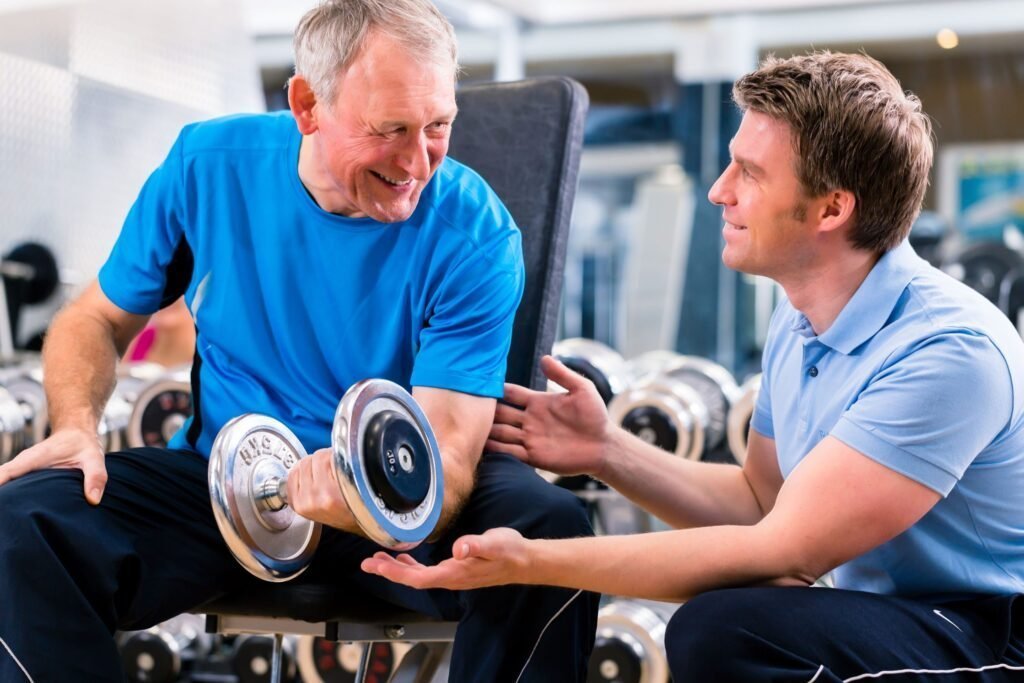
Recommended Exercises and Equipment for Seniors
There are specific exercises and equipment that are particularly beneficial for seniors during strength training. Here are some recommendations:
Low-impact exercises are ideal for older adults as they are gentler on the joints. Walking, swimming, and cycling are excellent choices for cardiovascular exercise. These activities provide a great cardiovascular workout without placing excessive stress on the joints.
Resistance training with light weights or bands is another effective option for seniors. Using lighter weights or resistance bands allows older adults to perform strength training exercises without straining their muscles or joints. This helps improve muscular strength and endurance while minimizing the risk of injury.
Balance and stability exercises should also be incorporated into a senior fitness program. These exercises help improve balance and reduce the risk of falls, which is especially important for older adults. Standing on one leg, heel-to-toe walk, and Tai Chi are examples of balance exercises that can be beneficial.
In addition to these exercises, there are various types of equipment that can enhance a senior’s strength training routine. Stability balls, resistance bands, and light dumbbells are popular choices as they are versatile and can be easily incorporated into different exercises.
By incorporating these recommended exercises and equipment, senior fitness instructors can provide a well-rounded strength training program that targets different muscle groups and helps maintain overall strength and mobility in older adults.
Modifications for Physical Limitations and Conditions
When working with older adults who have physical limitations or health conditions, it is important for senior fitness instructors to make appropriate modifications to their exercises and programs. Here are some examples:
For individuals with arthritis or osteoporosis, exercises that put less stress on the joints and bones should be prioritized. This may involve reducing the range of motion in certain exercises, using lighter weights, or opting for low-impact alternatives such as swimming or water aerobics.
Catering to individuals with mobility limitations may involve incorporating seated or supported exercises. This allows older adults who have difficulty standing or balancing to still engage in strength training. Seated leg extensions, chair dips, and seated resistance band exercises are examples of modifications that can be made.
Incorporating exercises for chronic health conditions is also important. For example, individuals with diabetes may benefit from exercises that involve cardiovascular activity to help regulate blood sugar levels. Individuals with cardiovascular conditions may need to monitor their heart rate during exercise and make appropriate adjustments.
By making these modifications and accommodations, senior fitness instructors can ensure that older adults with physical limitations or health conditions can safely and effectively participate in strength training sessions.
In conclusion, qualifications and certifications are crucial for senior fitness instructors to effectively lead strength training sessions for older adults. Finding a reputable and experienced instructor can be done through online directories, referrals from healthcare professionals, and contacting fitness organizations. Techniques and modifications in strength training should be customized to meet the specific needs of older adults, including joint health, flexibility, and balance exercises. Reputable fitness organizations and programs can provide certifications and specialized training for working with older adults. Experience with older adults is important for understanding their unique needs and limitations, as well as adapting exercises for various fitness levels. Some red flags to watch out for when choosing a senior fitness instructor include a lack of qualifications, inability to provide references, and unwillingness to adapt programs. In addition to strength training, cardiovascular exercises, flexibility and stretching exercises, and functional exercises should be incorporated into a senior fitness program. Safety and well-being during strength training can be ensured through proper warm-up and cooldown routines, regular monitoring, and creating a safe workout environment. Recommended exercises and equipment for seniors include low-impact exercises, resistance training with light weights or bands, and balance and stability exercises. Modifications should be made for older adults with physical limitations or health conditions, such as adjusting exercises for arthritis or osteoporosis and incorporating exercises for chronic health conditions. By following these guidelines, senior fitness instructors can provide safe and effective strength training programs that promote the health and well-being of older adults.

